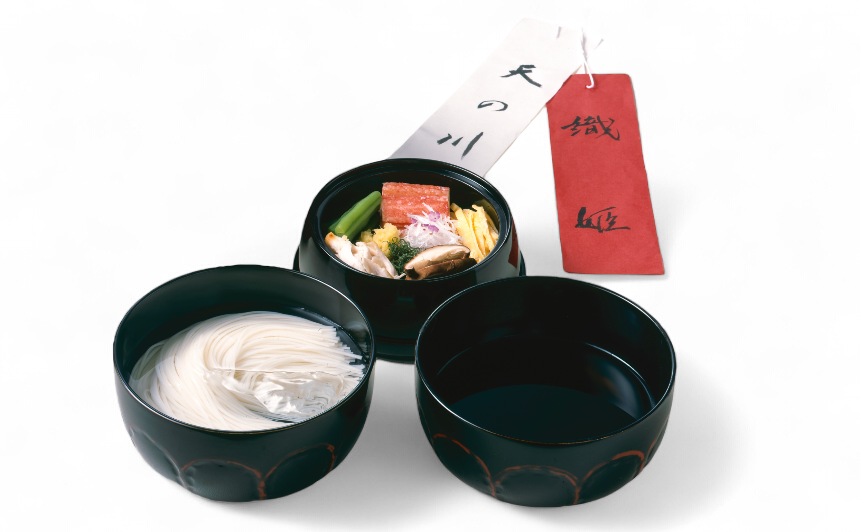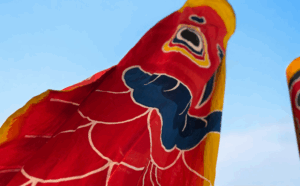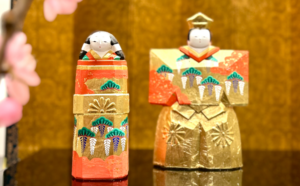On July 7th, we’ll welcome the Tanabata Festival, also known as ”Shichiseki no Sekku.” It is one of Japan’s five seasonal festivals.
In the central Kanto region, it is celebrated on July 7th according to the modern calendar, but in Sendai, a major city in the northern Tohoku region, and other regions like Kyoto, the festival is held on the lunar calendar. The five seasonal festivals in Japan are: The “Joshi no Sekku” – March 3, the “Tango no Sekku” – May 5, the “Choyo no Sekku” – September 9, the “Jinjitsu no Sekku” – January 7 following the new year.
This time, I will write about the origin of this Star Festival and the dish we eat on this “Tanabata” day.
Origin of Tanabata
Many annual events have their roots in ancient Chinese traditions, and Tanabata festivals are no exception.
The Tanabata Festival comes from the legend of the Cowherd star and the Weaver Girl star, who supposedly met once a year. It also includes part of a festival called “Kikkoden,” where women prayed to improve their sewing skills. In the Heian period, the “Kikkoden” event was held in the imperial court.
Records show that a shrine was set up and they offered something distinctive of the era, like musical instruments like lutes and kotos, threads and fabrics in five colors, seasonal foods, and fall grasses. Over time, there were some changes, but in the Edo period, the Tanabata tradition we know today became common: bamboo stalks were decorated with “tanzaku,” short strips of paper in five colors with wishes written on them. These five colors are blue (green), red, yellow, white, and black, each representing wood, fire, earth, metal, and water. This is based on the old Chinese concept of Yin-Yang and the Five Elements.
Tanabata Cooking
One of the dishes I make for Tanabata is “Tanabata Somen.”
In this dish, the somen noodles are placed to look like the flowing Milky Way or the threads and fabrics of the Weaver Girl. Then, I top the noodles with ingredients in five different colors. These include green cucumber, red crab meat, thinly sliced yellow scrambled egg, lightly grilled white chicken breast, and black nori (seaweed) or grilled shiitake mushrooms. This presentation captures the spirit of Tanabata and the traditional five-colored threads, and somen noodles are a great way to kick off the summer season.
Around July and August, the rice stored from the previous year starts to run out. This season often marks a shortage of rice as a food supply. Plus, in early June, the season called “Wheat Autumn” starts, which is the start of the wheat harvest. The somen noodles are made by gathering wheat and grinding it into flour.
Back in the Heian period, there was a custom of making a fried sweet called “Sakubei,” which is considered the early form of somen noodles. The treat was offered to the gods to show appreciation for the wheat harvest. In the “Kikkoden” during the Muromachi era, it seems that they wrapped Sakubei in Kaji leaves, tied it in a cross shape with somen, and tossed it up onto the roof.
Somen
Somen is the thinnest type of noodle, with soba coming next, and udon being the thickest. I had the chance to make hand-stretched somen while studying in Shodoshima, where is known for its somen production, for about a week. The great thing about hand-stretched somen is that it doesn’t come out uniform. If you look at a cross-section, you’ll see all kinds of shapes—some are almost square, and others more triangular. This variety gives it a really unique texture when you eat it.
To really enjoy that texture, the boiled noodles should have a nice firmness. Overcooked somen misses the point. Getting the boiling method right is key to getting that perfect firmness.
How to Boil Somen
- Place the somen into a pot of boiling water.
- Once you add the noodles, the water will start to boil over because of the sliminess, so be sure to have some extra water ready.
- Prepare about 1 cup (200cc, or approx. 6.7oz.) of water, and when the water starts boiling again, add about half of the prepared water (100cc) to help calm it down.
- Wait for it to boil again and then add the remaining 100cc of water to settle it once more.
- When the water boils for the third time, it’s time to take out the noodles.
These boiling steps are important, but the key is to cool and firm them up after. To speed up the process, rinse them under running water or in ice water as vigorously as possible. This will help get rid of excess sliminess and make the noodles nice and firm.
Noodles made with wheat flour, like soba and udon, are boiled once and then quickly cooled in cold water to make them nice and firm. This cooling process lets you enjoy the noodles with a great texture, even after warming them up again and placing them in a hot soup, or making them into “kake soba,” a popular comfort soba dish. In some cases, like “Kamaage Udon,” the noodles are served hot without the cooling step, so they are not firmed up in cold water.
Somen is an easy-to-eat dish, especially during the hot summer months when people often lose their appetite. To bring out the best texture, be sure to boil the noodles until firm and then cool them quickly in cold water.
On Tanabata, be sure to enjoy Tanabata Somen—a festive version of the dish decorated with five colorful toppings!




